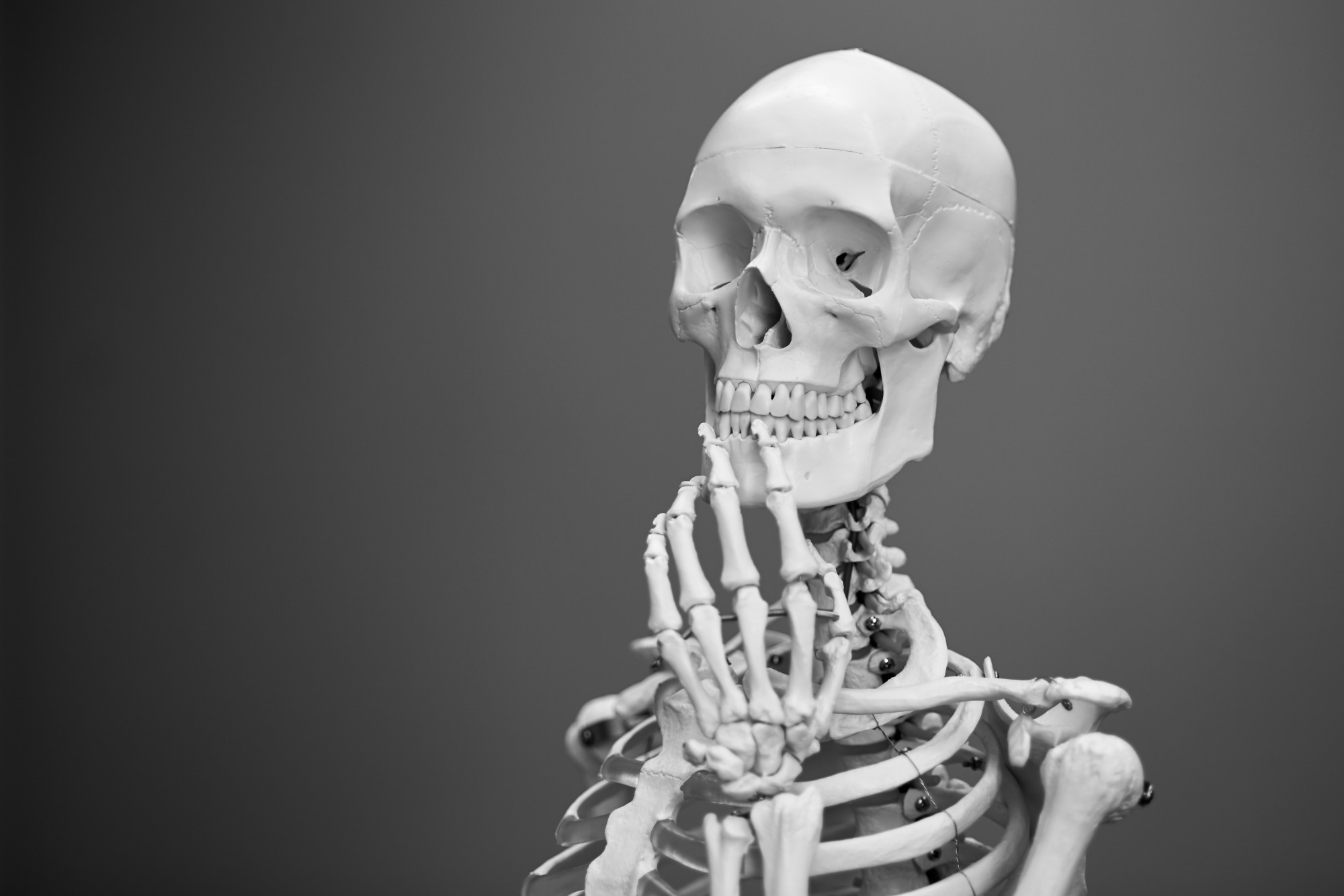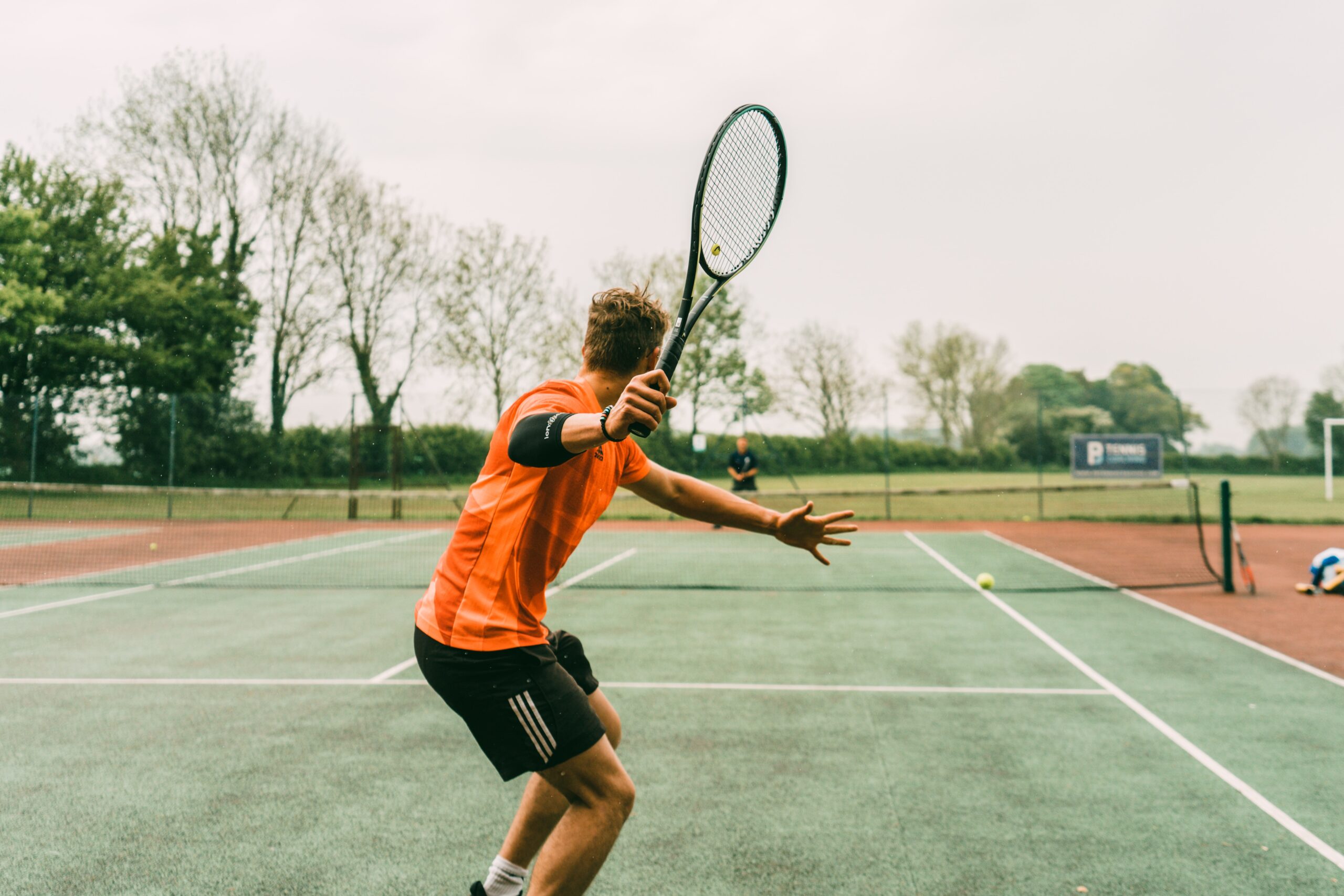Overview
Tennis, the white sport, has kept crowds entertained since the late 19th century. Wimbledon was the first tennis tournament starting in 1877. The biggest 5 all time Grand Slam winners in singles are: Margaret Court (24 titles), Serena Williams (23 titles), Novak Djokovic (23 titles) and Stefi Graff and Rafael Nadal (22 each). Recently we witnessed an absolutely thrilling Wimbledon final between Novak Djokovic and Carlos Alcaraz. This match was another proof that tennis is a sport that demands extraordinary athleticism, agility, and endurance. From extremely powerful serves and precise groundstrokes to lightning-fast movements across the court, tennis players possess a unique set of physical attributes that allow them to excel in the game, but what are the main features a tennis player should have in order to excel in this sport?
Today’s article will explore the anatomy of a tennis player, delving into the key muscles and physiological characteristics that contribute to their success on the court.

The Core Muscles: The Powerhouse of a Tennis Player
The core muscles play a pivotal role in a tennis player’s performance. Tennis is a physically demanding sport that requires the engagement of various core muscles to generate power, maintain stability, and execute precise movements on the court. Situated in the abdomen, lower back, and hips, the core muscles provide stability, balance, and power to every shot a player takes. During a serve or groundstroke, the core muscles engage to generate rotational force, transferring energy from the lower body to the upper body and racquet.
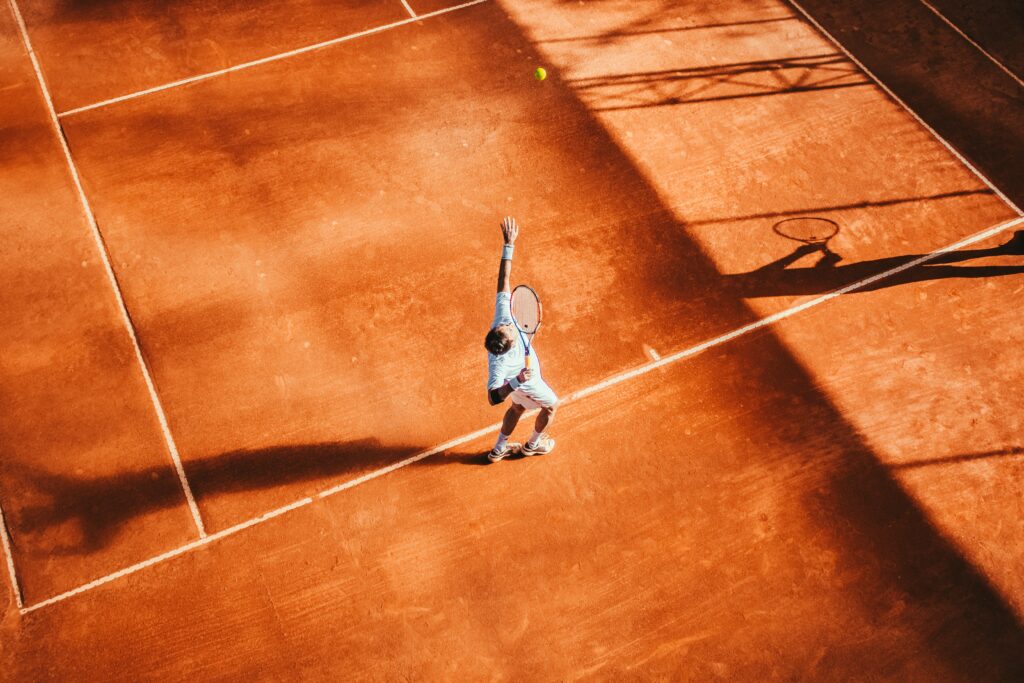
Here is a list of core muscles commonly used by tennis players:
Rectus Abdominis: The rectus abdominis, commonly referred to as the “abs,” is a long muscle that runs down the front of the abdomen. It is responsible for flexing the trunk and plays a crucial role in generating power during serves and groundstrokes.
Obliques: The oblique muscles are located on the sides of the abdomen. There are internal and external obliques, and they are essential for rotational movements, such as those used during forehands, backhands, and serves.
Transverse Abdominis: The transverse abdominis is a deep muscle located underneath the rectus abdominis. It acts as a stabilizer, providing support to the lower back and core during movements like lateral shuffling and sudden changes in direction.
Erector Spinae: The erector spinae muscles run along the spine and are responsible for extending the back. They help maintain an upright posture and provide stability during various tennis strokes.
Multifidus: The multifidus muscles are a group of small muscles located along the spine. They play a critical role in stabilizing the vertebrae during dynamic movements, such as rotating to reach shots on the tennis court.
Quadratus Lumborum: The quadratus lumborum muscles are located in the lower back on either side of the spine. They assist in lateral bending and contribute to maintaining proper posture and stability during lateral movements.
Hip Flexors: The hip flexor muscles include the iliopsoas and the rectus femoris. They are responsible for flexing the hip joint, which is essential for movements like running, lunging, and executing powerful serves and groundstrokes.
Gluteal Muscles: The gluteal muscles (gluteus maximus, gluteus medius, and gluteus minimus) are located in the buttocks. They are crucial for generating power during movements like running, jumping, and explosive lateral movements on the tennis court.
Pelvic Floor Muscles: The pelvic floor muscles provide stability to the pelvis and play a role in core stability during various tennis movements.
Lower Body Strength: The Key to Swift Movement
Tennis players require exceptional lower body strength and endurance to navigate the court with speed and agility. The quadriceps, hamstrings, calves, and gluteal muscles are all crucial in providing the necessary propulsion and stability for quick lateral movements and explosive bursts during sprints.

Bellow is a list of lower body muscles commonly used by tennis players:
Quadriceps: The quadriceps are a group of muscles located on the front of the thigh. The group contains muscles like: rectus femoris, vastus lateralis, vastus medialis and vastus intermedius. They are heavily involved in movements like running, jumping, and lunging, which are essential for tennis players during rallies and court coverage.
Hamstrings: The hamstrings (biceps femoris, semitendinosus, semimembranosus) are located on the back of the thigh. They work in conjunction with the quadriceps to provide stability during movements and are particularly engaged during deceleration and changes of direction on the court.
Gluteal Muscles: The gluteal muscles, including the gluteus maximus, gluteus medius, and gluteus minimus, are situated in the buttocks. They play a vital role in generating power for explosive movements, such as sprinting, jumping, and lateral shuffling.
Calves: The calf muscles, consisting of the gastrocnemius and soleus, are found in the lower leg. They are essential for pushing off the ground during movements like sprinting and jumping, as well as for maintaining balance during various strokes.
Adductors: The adductors are a group of muscles on the inner thigh. They assist in stabilizing the hips during lateral movements and provide support when moving side to side on the tennis court.
Abductors: The abductors are located on the outer hip and are responsible for moving the leg away from the midline of the body. They contribute to lateral movements and maintaining balance during quick changes of direction.
Hip Flexors: The hip flexor muscles, including the iliopsoas and rectus femoris, are located at the front of the hip. They play a crucial role in bringing the thigh toward the abdomen, aiding in movements like running, lunging, and explosive shots.
Hip Rotators: The hip rotator muscles are deep muscles that allow the hip joint to rotate. They are essential for generating torque during rotational movements, such as hitting forehands and backhands.
Tensor Fasciae Latae (TFL): The TFL is a small muscle located on the side of the hip. It helps stabilize the hip and assists in movements like lateral shuffling and side-to-side footwork on the tennis court.
To train all these lower muscles, plyometric exercises, lunges, and squats are essential for developing these muscles and enhancing a player’s ability to change direction rapidly. A well-conditioned lower body is crucial for dynamic movements and efficient court coverage during matches.
Shoulder and Arm Muscles: Powering the Serve and Groundstrokes
The serving motion in tennis involves a series of complex movements that demand robust shoulder and arm muscles. The rotator cuff, deltoids, and triceps work together to produce the power and accuracy required for a dominant serve. Likewise, groundstrokes such as forehands and backhands rely on these muscles to generate topspin and pace. Tennis players often incorporate weight training and resistance exercises, such as shoulder presses and bicep curls, to develop the necessary strength and endurance in these muscle groups.

Tennis players rely heavily on their shoulder and arm muscles to execute powerful serves, accurate groundstrokes, and precise volleys. Here is a list of the shoulder and arm muscles commonly used by tennis players:
Deltoid Muscles: The deltoid muscles are located on the outer side of the shoulder and consist of three parts: anterior deltoid, middle deltoid, and posterior deltoid. They play a crucial role in shoulder movement and stability, allowing tennis players to raise and rotate their arms during various strokes.
Rotator Cuff Muscles: The rotator cuff is a group of four small muscles – supraspinatus, infraspinatus, teres minor, and subscapularis – that stabilize the shoulder joint. These muscles are particularly important in providing control and support during the serving motion and various overhead shots.
Biceps Brachii: The biceps brachii, commonly known as the biceps, is a muscle located in the front of the upper arm. It plays a significant role in bending the elbow, which is crucial in executing shots like forehands and backhands.
Triceps Brachii: The triceps brachii is a muscle located at the back of the upper arm. It is responsible for straightening the elbow and provides the power necessary for shots like serves and backhand strokes.
Brachialis: The brachialis is a muscle located underneath the biceps, between the upper arm bone (humerus) and the forearm bone (ulna). It assists in elbow flexion and contributes to shot power, particularly in forehands.
Brachioradialis: The brachioradialis is a muscle on the forearm that contributes to forearm rotation and elbow flexion. It plays a role in generating power for various shots.
Pronator Teres and Pronator Quadratus: These muscles are responsible for forearm rotation and assist in generating spin on the tennis ball during strokes like topspin forehands.
Wrist Flexors and Extensors: The wrist flexor and extensor muscles are located on the forearm and are vital for controlling the racquet and generating wrist snap, which impacts the spin and direction of shots.
Anconeus: The anconeus is a small muscle located on the back of the elbow joint. It assists the triceps in extending the elbow and stabilizes the joint during various tennis movements.
Tennis players often engage in strength training exercises for the shoulder and arm muscles to enhance power, endurance, and racquet control, which are crucial for success on the court. Specific training regimens can help prevent injuries and optimize performance during competitive matches.
Grip Strength: Controlling the Racquet with Precision
An often overlooked aspect of a tennis player’s anatomy is their grip strength. The muscles of the forearm, particularly the flexors and extensors, play a crucial role in controlling the racquet and maintaining a firm grip during shots. A strong grip allows players to execute delicate drop shots with finesse and put extra spin on their serves and groundstrokes. Regular grip-strengthening exercises, like wrist curls and reverse wrist curls, can enhance a player’s control over the racquet and improve shot accuracy.
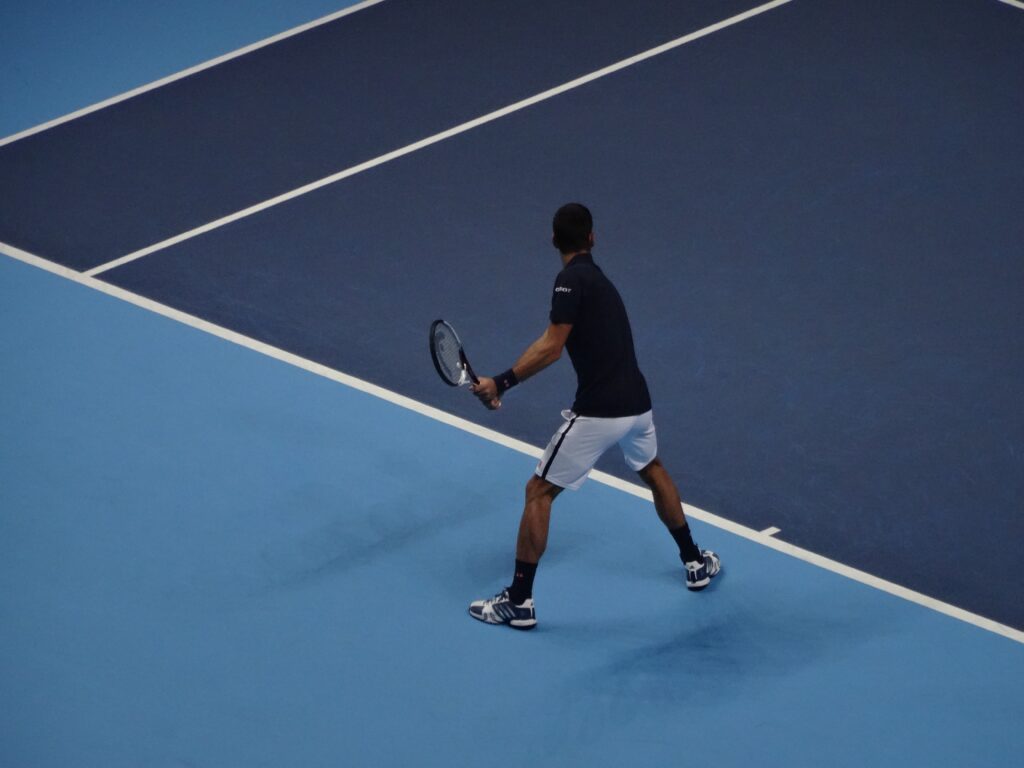
Cardiovascular Endurance: Outlasting the Competition
Tennis is an endurance sport that requires players to sustain intense physical effort over extended periods. A strong cardiovascular system is essential for delivering oxygen and nutrients to working muscles efficiently. Regular aerobic exercises, such as running, cycling, or high-intensity interval training (HIIT), can improve a tennis player’s stamina and enable them to perform at their best throughout long matches and demanding tournaments.
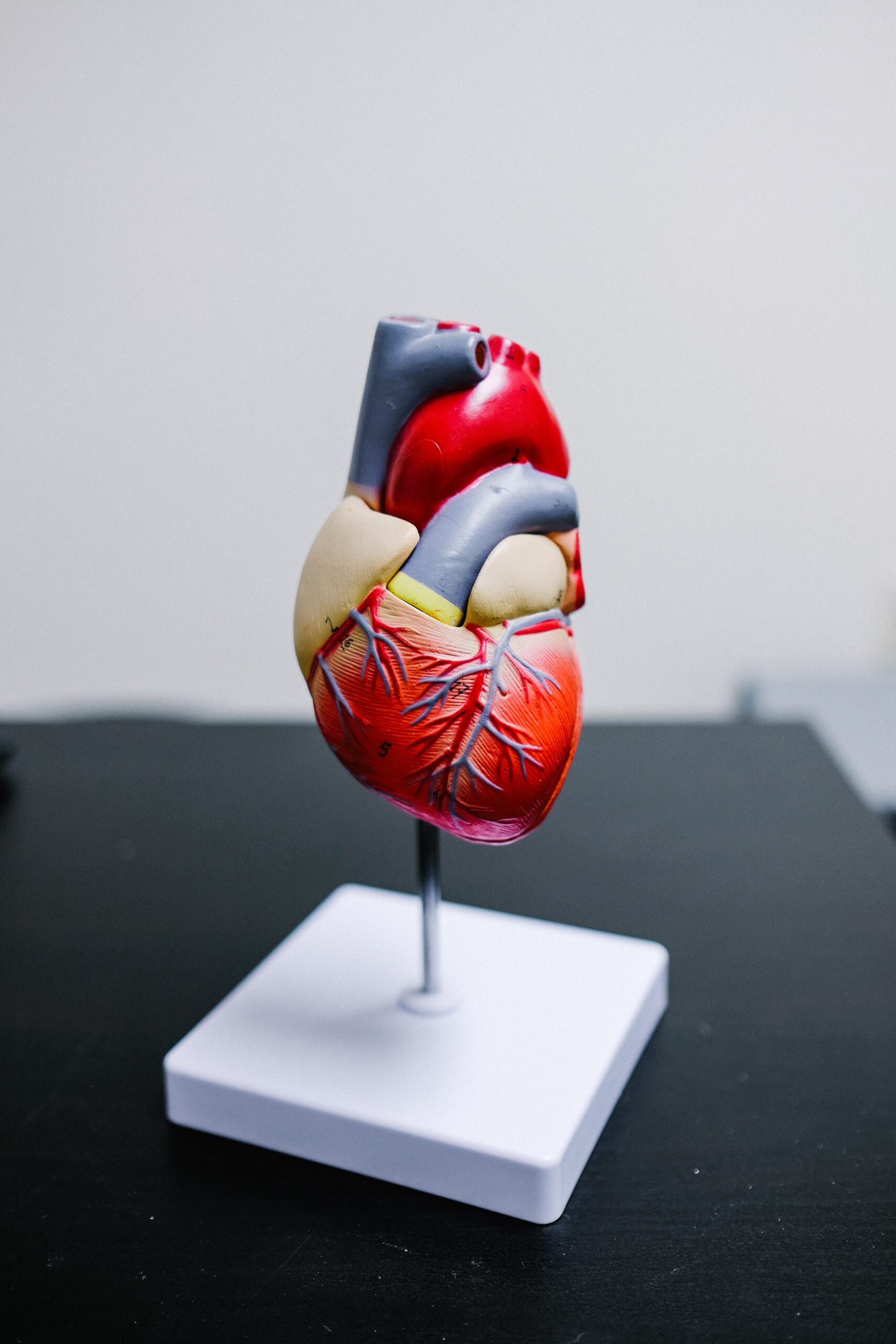
Flexibility and Mobility: Preventing Injuries
The dynamic and explosive movements in tennis put players at risk of various injuries. To mitigate these risks, tennis players focus on improving flexibility and mobility. Stretching exercises, yoga, and foam rolling routines help maintain joint health, prevent muscle imbalances, and reduce the likelihood of injuries like tennis elbow or sprained ankles. Enhanced flexibility also facilitates a wider range of motion, enabling players to reach challenging shots with ease.
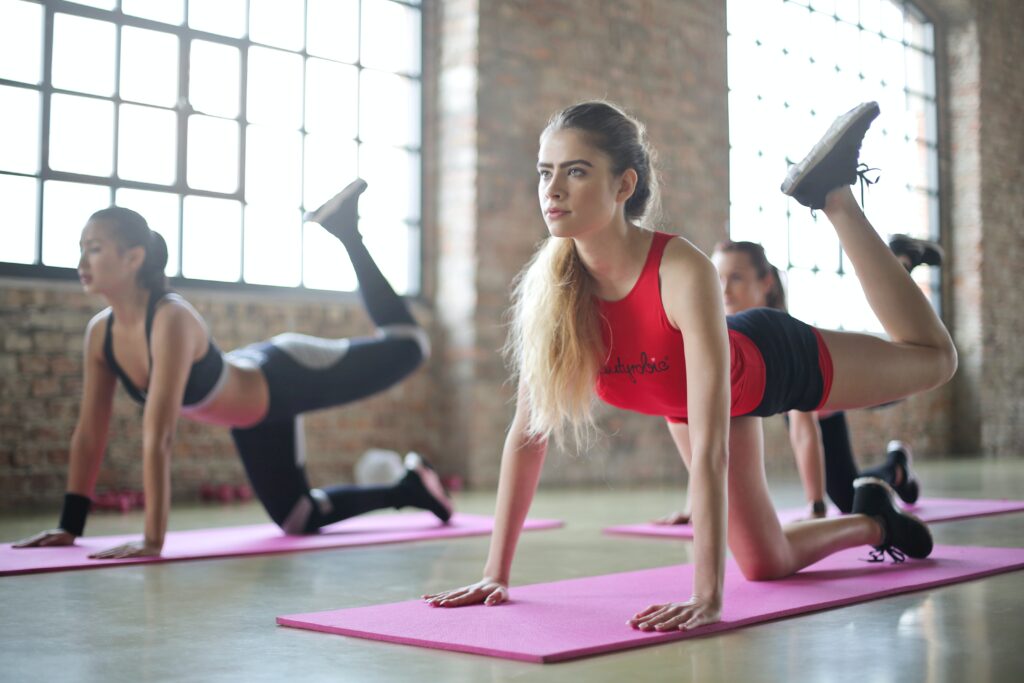
Mental Toughness: The Psychological Aspect
Anatomy in tennis extends beyond just physical attributes. Mental toughness is a crucial element that distinguishes successful players from others. The ability to stay focused, resilient, and composed under pressure can significantly impact match outcomes. Visualization techniques, mindfulness training, and working with sports psychologists are common methods employed by tennis players to strengthen their mental game and gain a competitive edge.

Conclusion
In conclusion, tennis, often referred to as the “white sport,” has captivated audiences since its inception in the late 19th century, with Wimbledon standing as the first major tournament dating back to 1877. The sport’s evolution has seen remarkable players rise to prominence, with both male and female athletes leaving an indelible mark on its history.
In the realm of female players, Margaret Court stands atop the list of all-time Grand Slam winners with an astounding 24 titles. Close behind her, Serena Williams has cemented her legacy with 23 titles, showcasing her dominance and versatility on the court. Notably, Steffi Graf also boasts an impressive tally of 22 Grand Slam titles, exemplifying her skill and finesse in the game. These remarkable women have reshaped the sport and inspire generations to come.
On the men’s side, the “Big Three” have set unprecedented records, each holding an astounding 20+ Grand Slam titles. Roger Federer’s (20) elegant style and shot-making artistry, Rafael Nadal’s (22) unparalleled prowess on clay courts, and Novak Djokovic’s (23) tenacity and mental fortitude have created an enthralling rivalry that has enthused tennis fans worldwide.
Beyond the accolades and records, the anatomy of a tennis player is a fascinating aspect that contributes to their success on the court. Core muscles, a powerhouse for stability and power, enable players to execute dynamic shots with precision. The strength and endurance of the lower body are paramount for swift and agile movements that help players cover the court efficiently.
Furthermore, the shoulder and arm muscles are crucial for generating power during serves and groundstrokes, while grip strength ensures precise racquet control. Flexibility and mobility play a vital role in preventing injuries, as the sport demands rapid changes in direction and explosive movements.
However, a tennis player’s anatomy encompasses more than just physical attributes. Mental toughness is a defining factor that separates champions from the rest. The ability to remain focused, composed, and resilient under pressure can be the determining factor in critical moments.
In conclusion, tennis is a sport that needs athleticism, skill, and mental fortitude, producing a spectacle that enthrals spectators worldwide. The remarkable achievements of both male and female players continue to shape the sport’s history, while the anatomy of a tennis player underscores the dedication and preparation required to reach the pinnacle of success in this highly competitive game. As the sport progresses, new talents will emerge, further enriching the legacy of tennis and inspiring future generations to strive for greatness both on and off the court.
